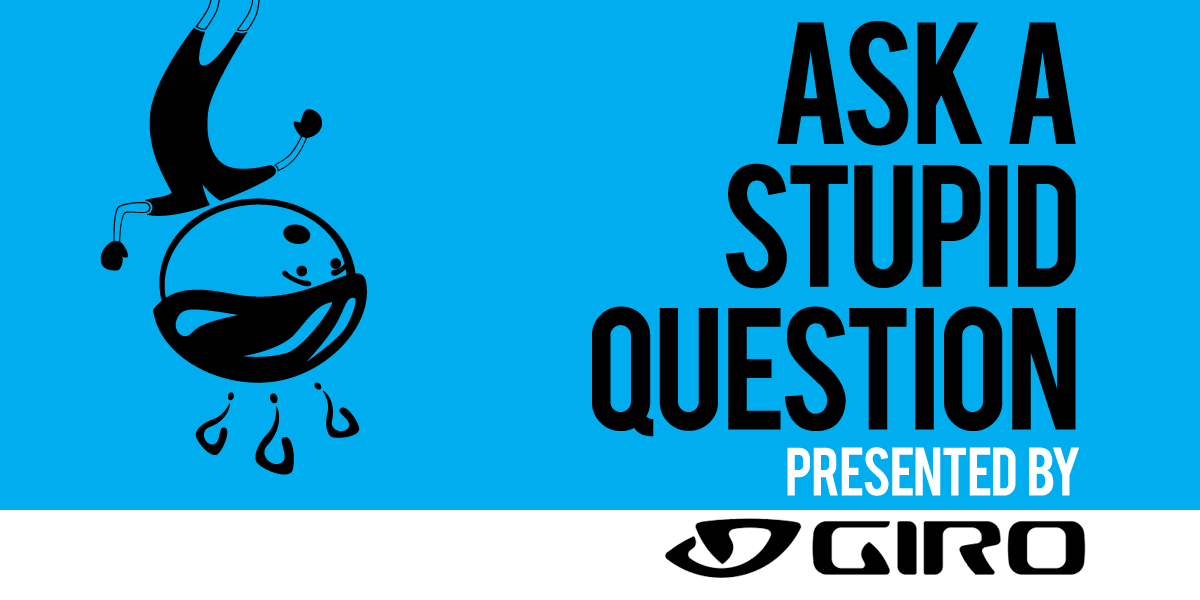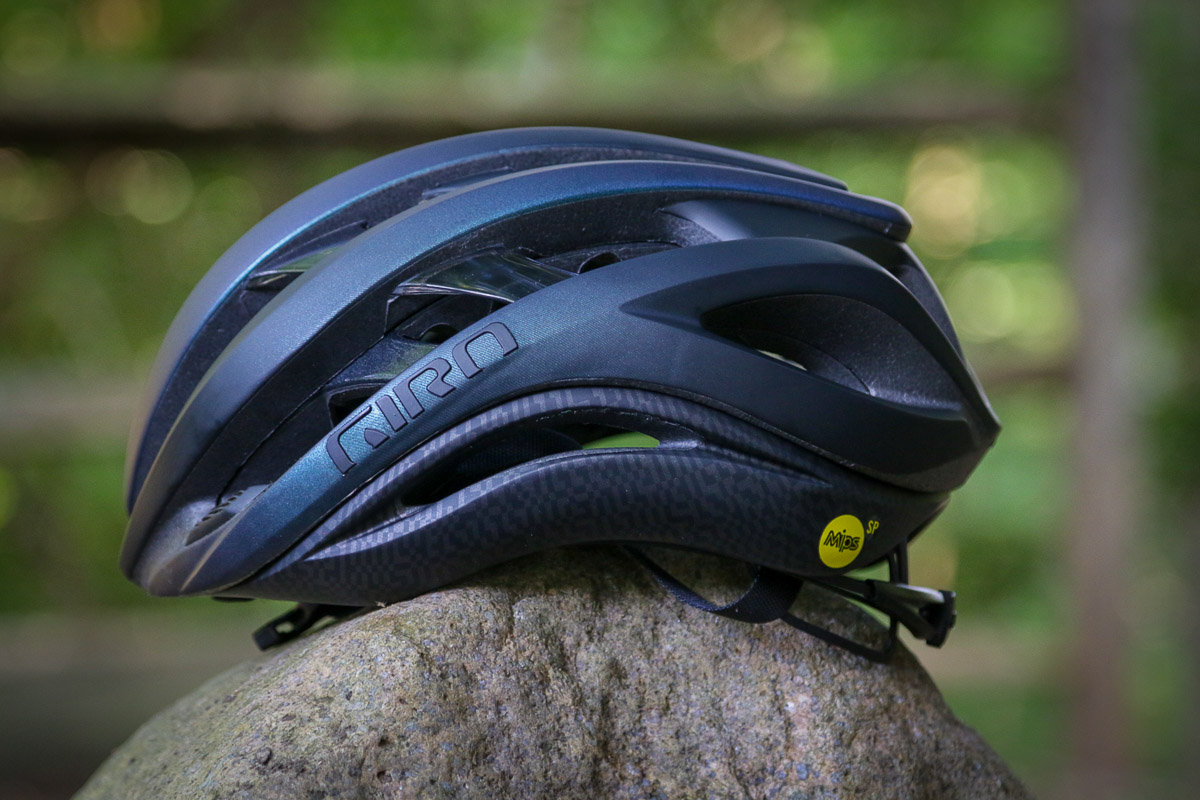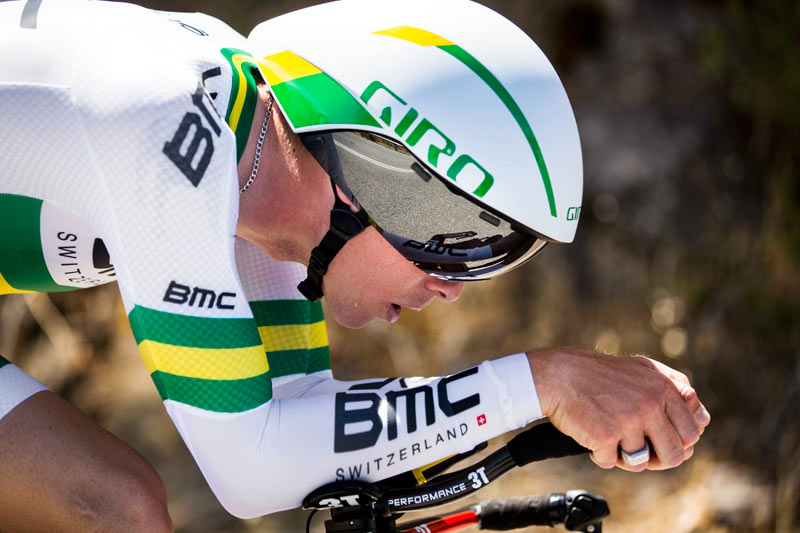We know, there’s no such thing as a stupid question. But there are some questions you might not want to ask your local shop or riding buddies. AASQ is our weekly series where we get to the bottom of your questions – serious or otherwise. Hit the link at the bottom of the post to submit your own question!
Welcome to our AASQ series where we try to answer all your most pressing bicycle related questions. For this week’s installment, we invited you to ask Giro anything, and based on the response, there’s a lot to learn about the humble bicycle helmet. Fortunately, Giro has over 30 years experience designing, testing, and building some of the most advanced helmets in the world and was more than willing to take on the onslaught of questions. We got so many in fact, that we have to split this AASQ into two parts, so we’ll start off with one of the most asked questions – what’s the lifespan of an average helmet?
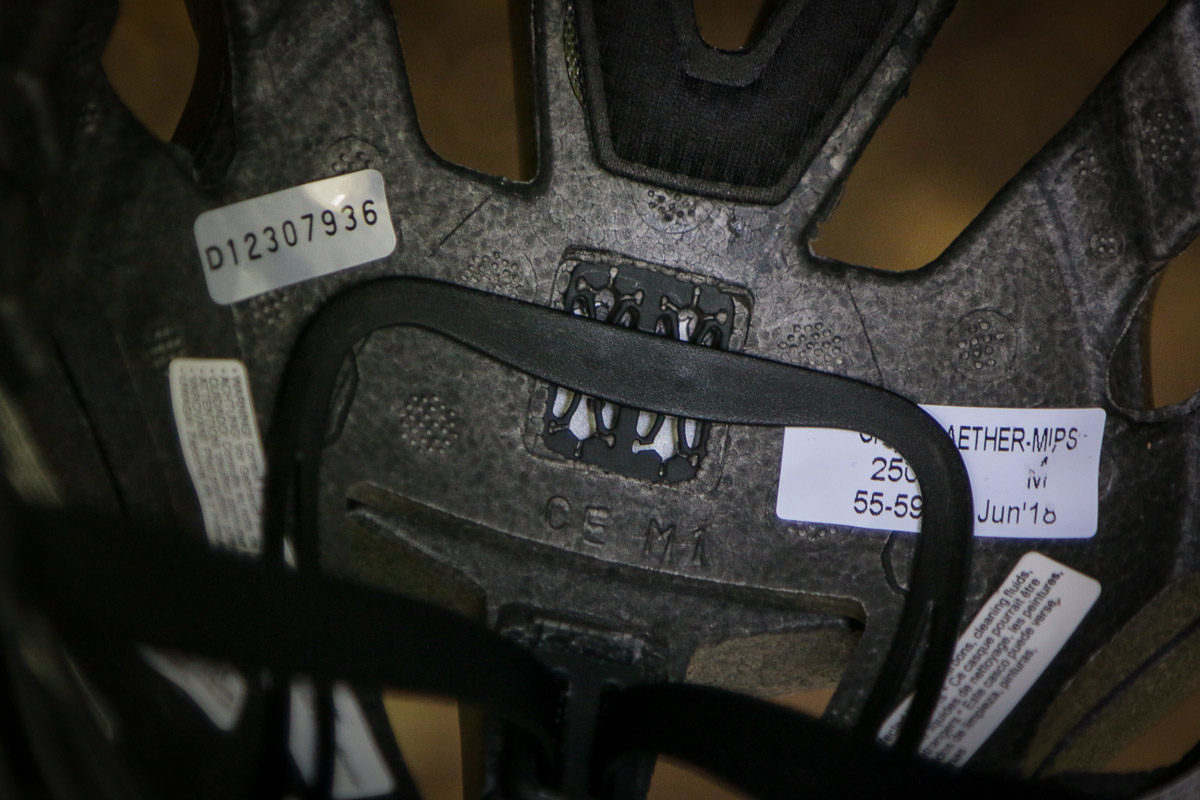
We got this question in many forms – how long can you use a helmet before buying a new one? Does that time start from the manufacture date or purchase date? Does elevation, UV radiation, sunscreen, or other factors have an effect on life span? Does EPS foam really degrade that quickly? Are you just trying to sell me another helmet?
Giro’s Response: It is important to understand that every helmet experiences different stresses, care, handling and use throughout its life. We can’t predict your helmet’s life, so we can’t be too specific about the exact factors that would trigger a call to replace it.
For instance, a fall of “only” 2 feet can generate more energy and damage to the helmet than a fall of 10 feet depending on speed, mass, surface area, and other unpredictable variables. This is why we sometimes refer to the old saying “Your mileage may vary” when people ask about helmet life span or durability.
It is also why we make a general recommendation that you replace your helmet after any significant impact, when you see signs of damage (cracked foam, dents, gouges, etc.) or after 3-5 years of use even when it hasn’t been impacted in a crash, since helmets can go through a lot of stress without showing much damage.
You always want to have a helmet that offers full protective capability. It’s also a fact that helmet performance and even standards evolve over time, so having the most relevant product is important to consider when you’re thinking about protective capability.
Common cleaners, skincare and sunscreen products can all degrade a helmet’s condition over time because they may contain chemical ingredients that effect the materials helmets are made from. The same is true of UV radiation, heat and other environmental factors, which can have an effect on most any material with enough time and/or exposure.
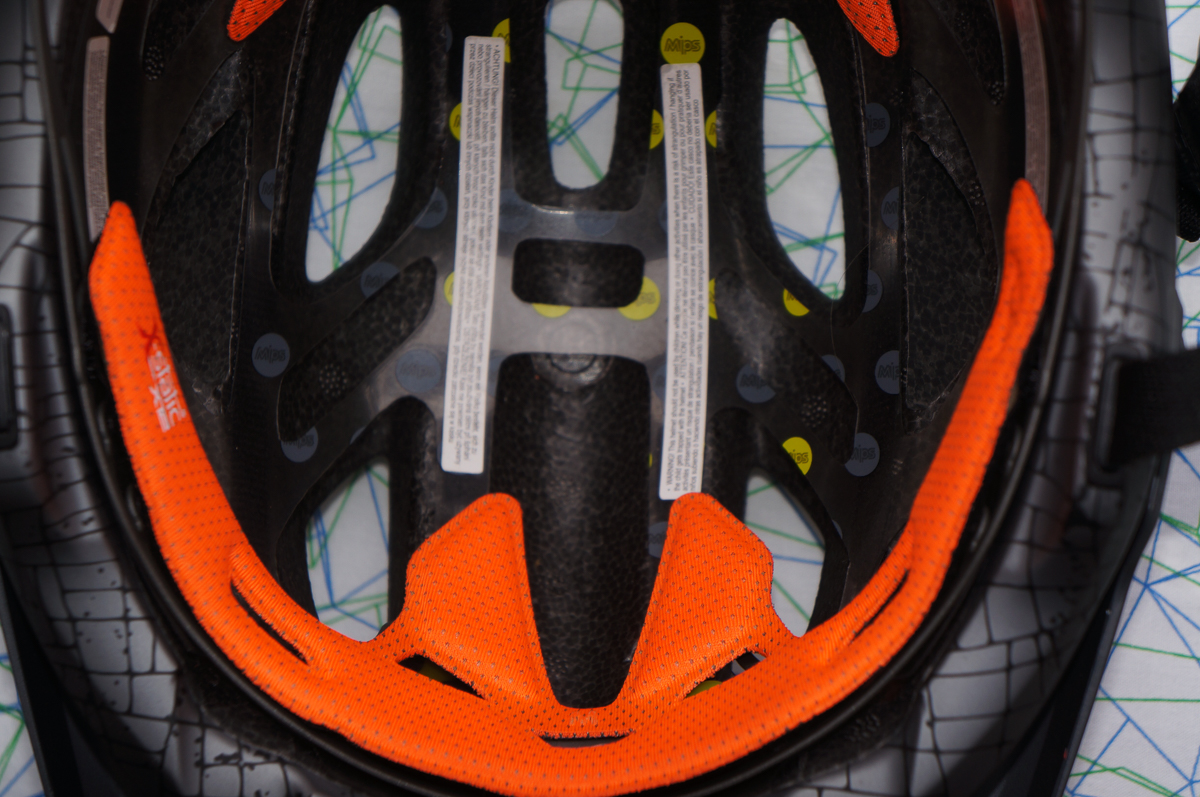
So along those lines then, what’s the best way to clean your helmet from the straps to the pads to prevent having a stinky helmet in the long run?
Giro: We include anti-microbial padding in many of our helmet models to help address this issue, but with enough time and use, any cycling helmet can benefit from a good cleaning. Helmets are made of materials that can be damaged by many commonly available cleaners, and petroleum-based solvents or cleaners are especially dangerous since they can compromise the helmet.
For best results, clean the helmet using a soft cloth or sponge, warm water and mild soap (such as a mild dish soap). Allow it to air dry in an open area, and store in a cool, dry place when it’s not in use.

So I’ve cleaned the helmet properly, and fortunately never had to test its crash-worthiness. Can a helmet be recycled after the end of its useful life cycle? Does Giro take any steps to make more environmentally friendly products?
Giro: Reducing environmental burden is important to us. In addition to the steps we’ve already taken across our product lines (outlined in more detail below), we are actively researching materials and processes that can reduce our impact even further and improve reuse scenarios. As we address this challenge, we have to consider every aspect of a product’s life and performance, from source to shelf to the end of life.
It is important to note that while some products can have tradeoffs in durability, strength, resilience or other performance criteria, helmets cannot have those tradeoffs. Recycling is also not standardized across the U.S. or internationally, so this also has to be considered when end of life scenarios are being evaluated for effectiveness. That said, technology and materials are evolving constantly, and we see this as an opportunity to innovate and ultimately improve our products.
Some of the steps we have already implemented to reduce our burden:
Packaging: Giro packaging is made from post-consumer materials in shapes and configurations that reduce material use, and with reduced printing coverage using water-based inks.
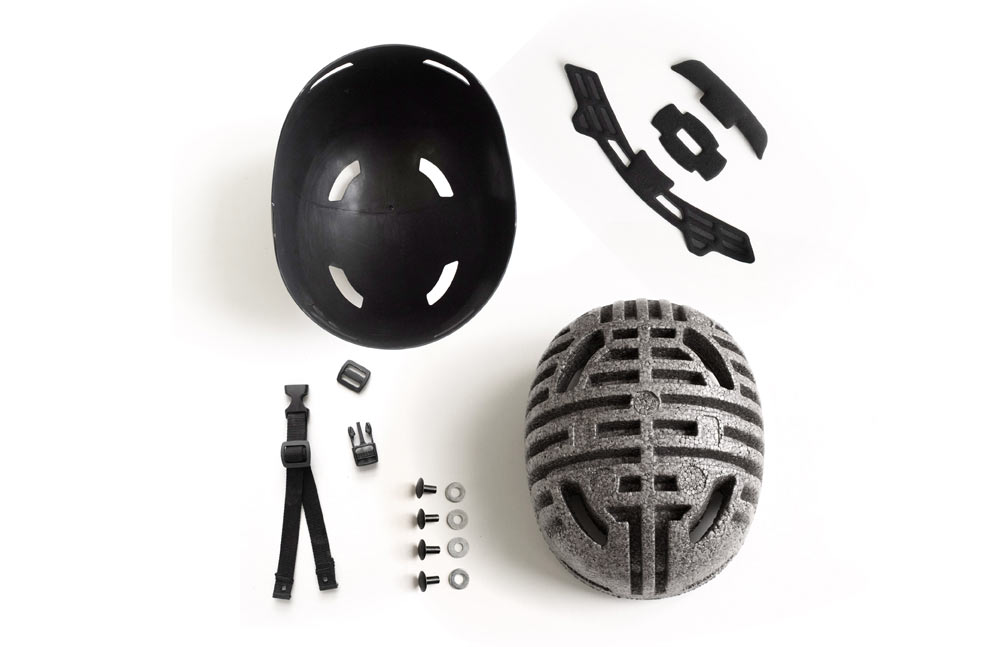
Helmets: In 2016, we produced a cycling helmet called the Silo®, which featured a recyclable shell with a biofoam liner, straps and pads that could be industrially composted. The entire helmet could be disassembled and hopefully avoid landfill. Ultimately, the production was too intensive to sustain, but it provided a foundation that will hopefully lead to a more sustainable version in the future.
Renew Series Apparel: We continue to work with vendors to bring more sustainable materials into our product lines, including our Apparel line which features bluesign and recycled materials, as well as 2019 styles that will feature Lycra® fabric made from fishing nets pulled out of the seas and recycled.
Footwear: Our Footwear line includes knit uppers that create less scrap than microfiber uppers, and we also use microfiber that includes recycled content. We have two shoe models that use EcoStep™ rubber soles from Vibram, which include 30% recycled rubber.
Gloves: We offer winter glove styles that feature insulation made with 80% recycled content.
Thank you for the question, and for your interest in products that are more sustainable.
Giro recently launched the new Aether road helmet, which was their first to incorporate MIPS Spherical. The advanced design with two different EPS shells sandwiched with a Low Friction Liner between them prompted questions of how durable that helmet would be in the long run – and if Giro did any specific durability testing for the design?
Giro: Helmet testing is something that we take very seriously, and we likely do significantly more testing than other brands because we have one of the world’s best equipped test labs, “The Dome,” as we call it, right in the middle of our office.
In addition to the testing required by third party laboratories to obtain certification, we do our own testing as part of our development and quality control efforts so that we have a better understanding of, and greater control over, the performance of our products. In addition to drop test rigs, our in-house lab is the only helmet test lab in the world that has three rigs that can evaluate rotational energy management (not currently mandated, but something we think is important and beneficial). The Dome also has all of the equipment required to test to any of the global cycling, snow, skate or powersports standards, a wind tunnel, thermal test rigs, and more.
The Aether’s two-piece liner with MIPS Spherical technology is no more or less durable than similar helmets equipped with MIPS technology, and the EPS is not more or less prone to damage simply because of the thickness of each individual piece of the liner. Covering the EPS with more shell material or a thicker shell material may help to prevent damage in some cases, but it is not a guarantee against damage. Additionally, it would add weight and cost, which are important considerations for a helmet that’s designed to be worn in high performance scenarios.
Speaking of performance helmets, what’s the best aero helmet for my budget and use? Just how much more aerodynamic is a true aero helmet like the Aerohead than an “aero road” helmet like the Vanquish? Are visors less aero?
Giro: The Giro Aerohead Ultimate is the most aerodynamically efficient production helmet we’ve tested to-date, but the cost may not fit everyone’s budget. The Aerohead offers nearly the same aero performance at a more budget-friendly price. The Giro Vanquish is popular among triathletes because it offers a balance of aerodynamic efficiency and cooling power, which can be essential to sustaining efforts over longer distances or through warmer conditions.
The effect of a visor on the helmet’s aerodynamic efficiency can vary significantly depending on the visor shape, how the visor integrates with the helmet and the rider’s head position. Both the Aerohead and the Vanquish have visors that wrap around the side of the helmet to streamline airflow along the side of the helmet to improve efficiency.
The best helmet choice comes down to your priorities. The chart on this page provides a direct comparison with aero and cooling data, plus some calculations that you may find helpful. Thanks for the question, and good luck at the races!
Finally, since we can’t post about Giro lately without it coming up – what’s the deal with the potential of Vista Outdoors selling off their cycling brands like Giro? Any update?
Giro:We cannot predict the sale date due to the variety of variables beyond our control, but Vista is committed to selling the Giro brand in the near future. We are grateful for your past support, and we hope to earn your business again in the future.
Stay tuned for part 2 coming next week!
Got a question of your own? Click here to use the AASQ form, or find the link under the Contact menu header up top anytime a question pops into your mind!
